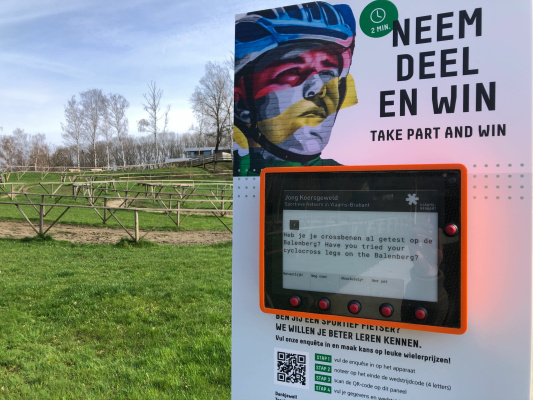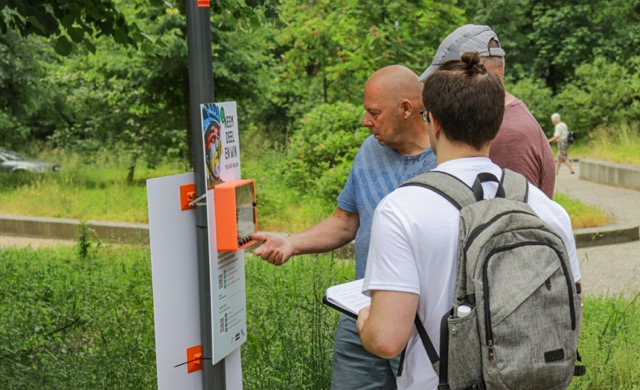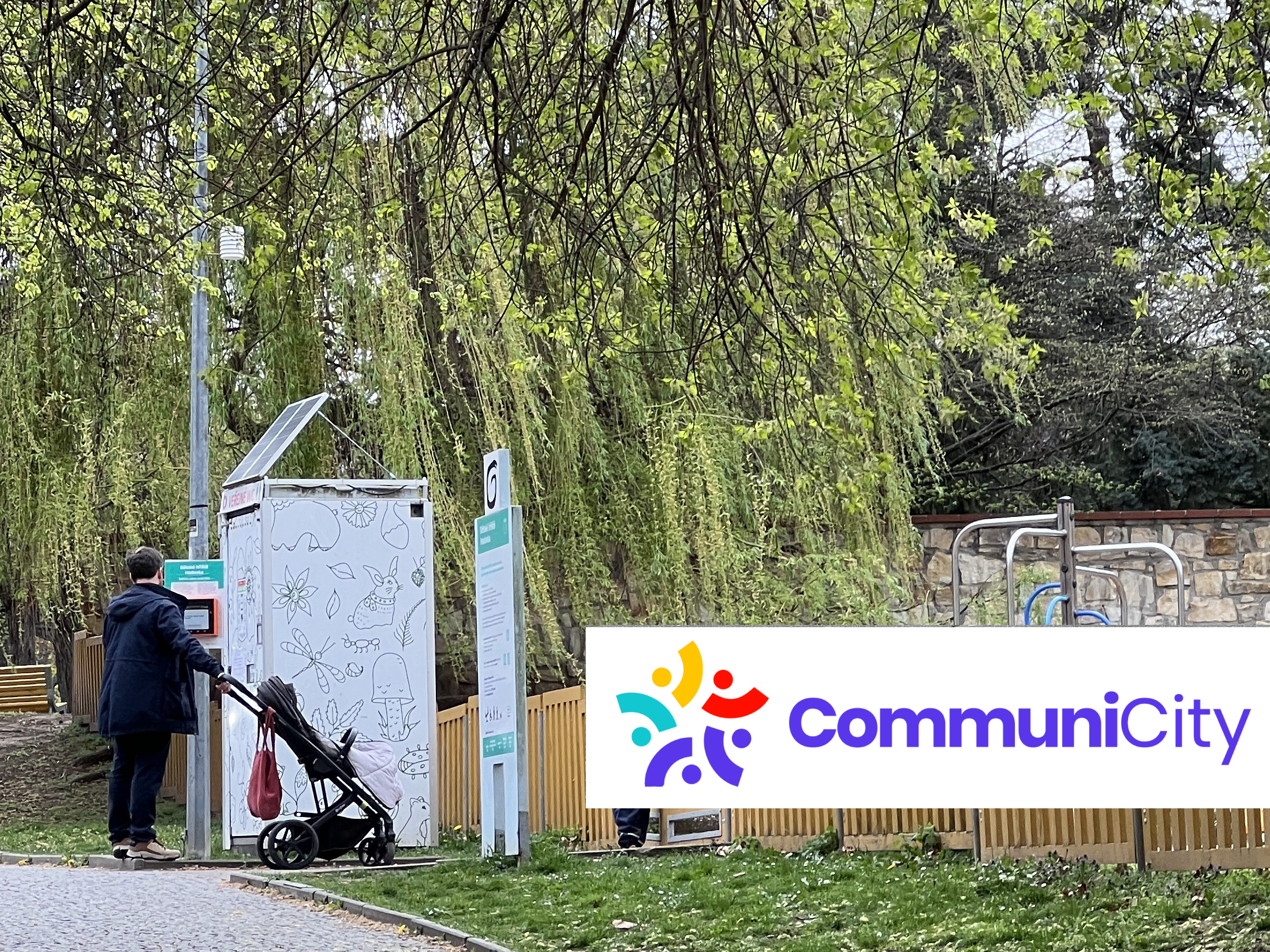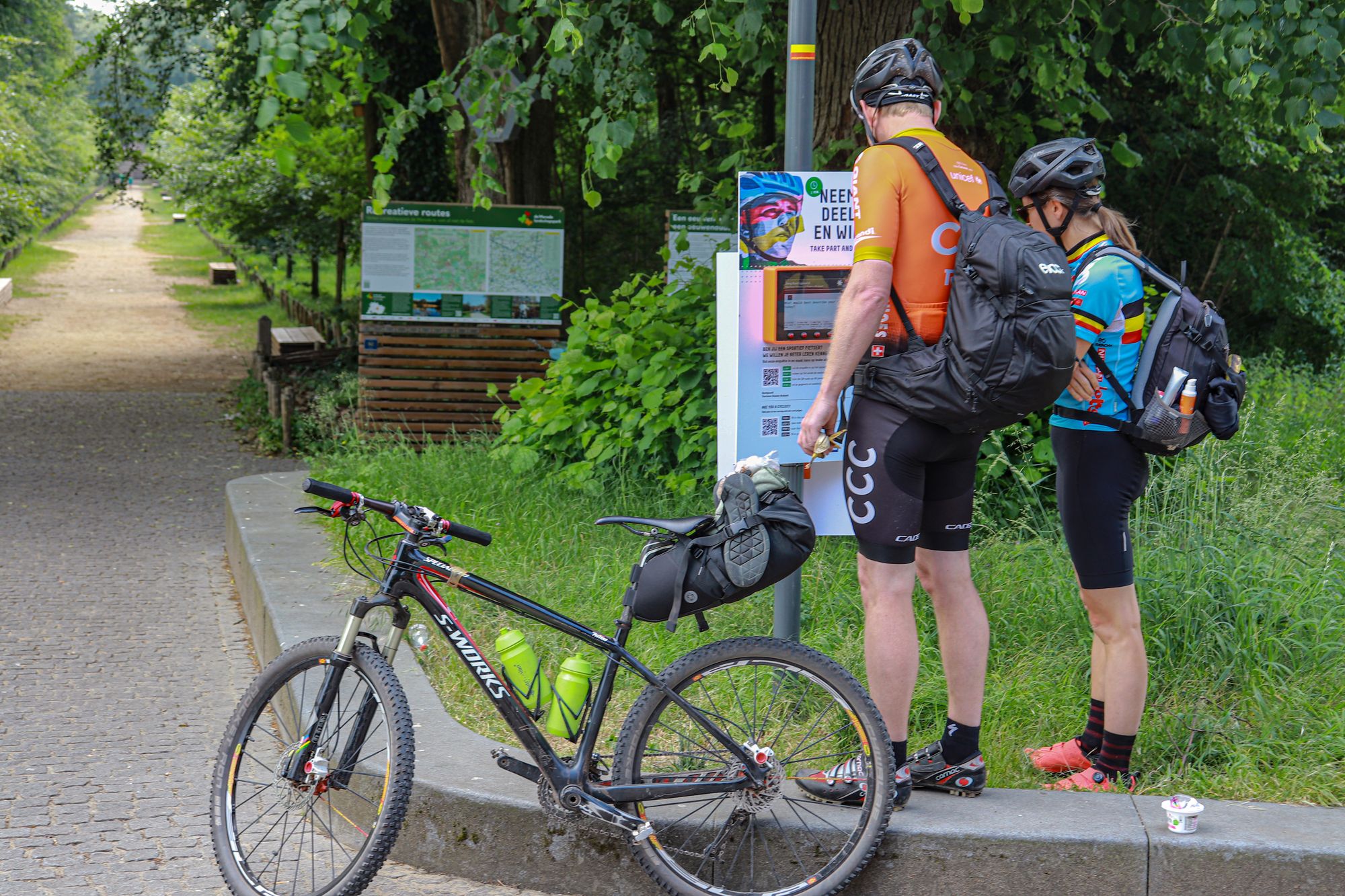Gathering Cycling Tourism Information
What were the objectives of this case study?
In this project, the tourism branch of the Flemish-Brabant provincial government (Belgium) wanted to gather insights into the profile and habits of cycling tourists. The province is well-known for its famous cycling routes and is home to multiple world-class cyclists, such as Sven Nys and Remco Evenepoel. With this research, the province aimed to better understand who visits the region, what motivates them to do so, and ultimately, what they can do to promote and support cycling in Flemish-Brabant.
Continues below the photo.

How was the deployment carried out?
The deployment took place in 6 locations across the province. Each location was thematically related to cycling. Locations had to be strategically chosen to be a potential stop or starting point, in order to convince cyclists to participate. As a bonus motivator, participants who completed the survey could enter to win a prize.
To maximise the volume of responses, and to account for changing tourism patterns, the deployment lasted for 3 months.
The Citizen Dialog Kit devices gathered a total of 811 completed surveys, and were located at:
- Sven Nys cycling centre (Tremelo)
- Abbey of Averbode (Scherpenheuvel-Zichem)
- Cycling track of Affligem (Affligem)
- Paddebroek (Gooik)
- Moskesstraat cobble stone climb (Overijse)
- Rustberg, Remco Evenepoel cafe (Dilbeek)
Continues with insights below the map and photos.


What were the insights from the deployment?
In total, we engaged more than 1800 participants during this deployment. A considerable number (811) also completed the entire survey (17-21 questions), with an average number of responses per participant in line with our recommendations (avg. 9/participant).
Meaningful insights included:
- Interest in shorter routes exists both for recreational as well as sporty cyclists. Routes for both audiences should therefore aim to offer shorter and longer loops.
- A considerable amount of cyclists (34%) who are following a signposted route found it on the Province’s website, more so than on social media or other cycling media channels.
- A primary reason for cycling in Flemish-Brabant is the beautiful landscape (42% for recreational, and 29% for sport cyclists).
- Close to 70% of participants are not cycling alone. The majority (60%) are small groups of 2-5 people.
Continues with reflections below the photo.

Reflections
This project demonstrates the value of deploying Citizen Dialog Kit for extended periods. Tourism Flemish-Brabant was able to gather feedback beyond the typical limitations of data collection, such as the availability and cost of surveyors or pollsters. Not only people who cycle during the day and on weekdays with nice weather were reached, but also on weekends and rainy days. At any time of day.
This case study also demonstrates that the length of surveys on Citizen Dialog Kit can be extended to 17-21 questions, if the deployment runs sufficiently long.
The collected responses also suggest the veracity of people’s answers. Many of the findings confirmed previous expectations or suspicions of the province, and followed logical patterns. Additional evidence that people respond truthfully.
Partners
- Client: Toerisme Vlaams-Brabant
- Municipalities: Tremelo, Scherpenheuvel-Zichem, Affligem, Gooik, Overijse and Dilbeek.






